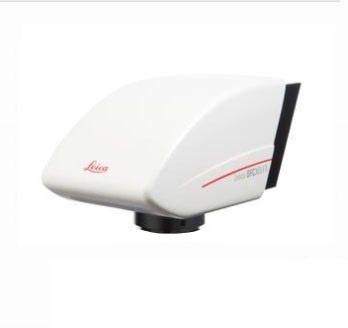| ◆ | 当前位置 > | 显微镜数码摄像头、CCD相机 > | 德国莱卡产品> |
德国莱卡DFC365FX 单色数码摄像头

- 产品简介
- 技术参数
- 可选配件
Leica DFC365FX Feature highlights :
Leica DFC365 FX offers excellent fluorescence documentation and fast time-lapse recordings under low light conditions. Based on the state-of-the-art Sony EXview HAD ICX285 sensor®, this cooled camera is exceptionally well suited for a wide range of fluorescence applications from basic fluorescence imaging to demanding applications such as TIRF, FRET, and Structured Illumination.
◇ Highly sensitive 1.4 megapixel Sony EXview HAD ICX285 sensor®.
◇ Regulated Peltier cooling for excellent signal-to-noise ratio.
◇ Two imaging modes: standard and nIR mode with at least 1.5 times enhanced sensitivity in the near infrared range of the spectrum (Quantum efficiency : 700-1000 nm ).
Nir mode selection provides significant quantum efficiency enhancement and makes this camera ideal for observation CY7 CY5 fluorescent dye.
◇ Three pixel clocking rates (1.6 MHz, 20 MHz, 40 MHz) for full control of image quality and acquisition speed.
◇ groundbreaking acquisition speed with up to 21 fps in full frame and 122 fps in 8x8 binning mode.
◇ high-speed live cell imaging --- unique in this class of fluorescence cameras is the flexibility of three pixel clocking rates to define readout speed of the sensor. In addition to the 1.6 MHz-mode, the Leica DFC365 FX offers 20 MHz and 40 MHz. The 40 MHz mode in particular is dedicated to fast, real-time time-lapse recording. In combination with an overlapping mode, where the signal is read out while the next image is acquired, the user can easily execute high-speed experiments. With a maximum of 21 frames per second in full frame mode (1392 x 1040) or over 76 fps with 4 x 4 binning, the Leica DFC365 FX is the high-performer in this class of scientific fluorescence CCD cameras.
◇ ultimate cell protection --- Minimizing exposure times during time-lapse recordings is crucial to avoid photo-damaging the specimen. The sensor's high sensitivity and the careful selection of glass interfaces within the camera – in combination with nIR mode –are ideal requisites to protect cells and ensure optimal acquisition conditions during live cell imaging.
Digital camera Leica DFC365FX Technical Data:
| Digital camera Leica DFC365FX Technical Data | |
|---|---|
| camera type | Digital monochrome, high-sensitivity cooled camera for fluorescence microscopy |
| housing | Aluminum, Size (L × W × H) 132 mm × 74 mm × 71 mm |
| Sensor | Sony ICX285, EXview HAD CCD technology, 2/3“ interline transfer progressive scan CCD |
| number of pixels | 1392 x 1040 |
| pixel size | 6.45 μm × 6.45 μm |
| sensitive surface | 9.00 mm × 6.70 mm |
| full well capacity | 18.000 electrons typical |
| exposure time | 7 μseconds – 10 minutes (depends on software) |
| cooling | one-stage Peltier cooling |
| dark noise | 6 electrons typical (1.6 MHz, 12 bit) |
| dark current | < 0.5 electrons/pixel/second |
| dynamic range | > 69 dB typical (1.6 MHz) |
| operating modes | Standard mode and nIR mode |
| a/d converter | 14 bit |
| bit depth | 8 bit/12 bit |
| partial scan | Freely definable RoI (region of interest), combination with binning possible |
| power supply | 12 V via FireWire cable |
| data | IEEE 1394b FireWire 9-pin single cable |
| c-mount | 0.7 x |
| analog gain | 1× – 10× |
| image formats | pixel clock mhz | fps* |
| full frame (1392*1040) | 1.6 | 1 |
| 20 | 11 | |
| 40 | 21 | |
| 2x2 binning (696 x 520) | 1.6 | 2 |
| 20 | 22 | |
| 40 | 42 | |
| 3x3 binning (464 x 346) | 1.6 | 3 |
| 20 | 31 | |
| 40 | 63 | |
| 4x4 binning (348 x 260) | 1.6 | 4 |
| 20 | 38 | |
| 40 | 77 | |
| 8x8 binning | 1.6 | 8 |
| 20 | 61 | |
| 40 | 122 |

